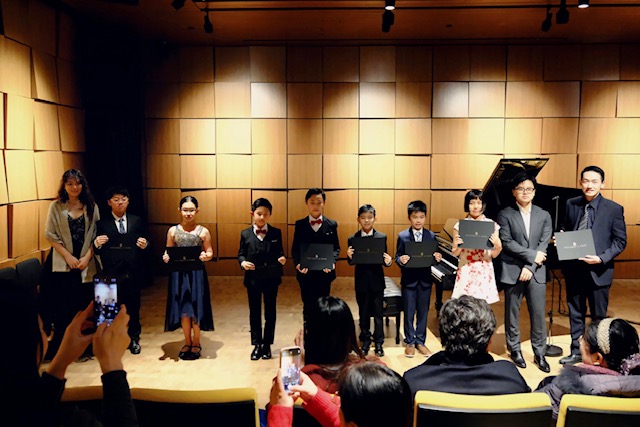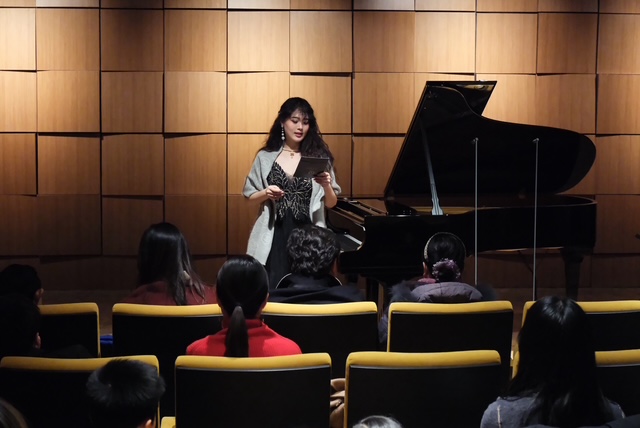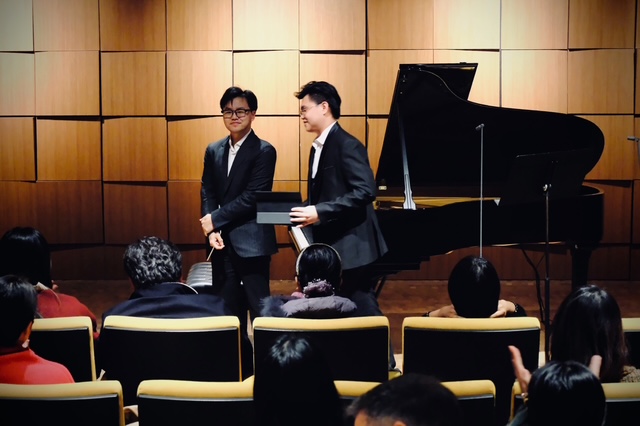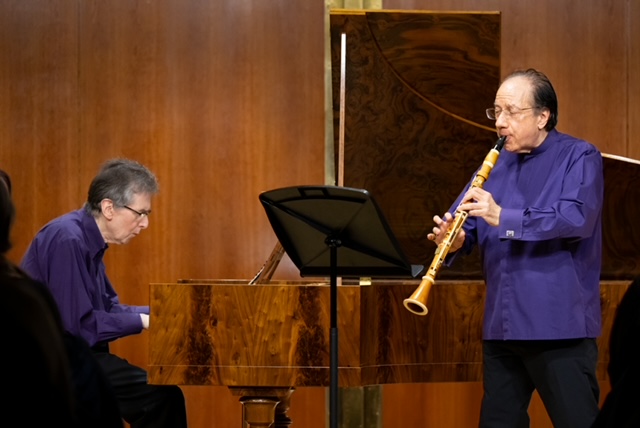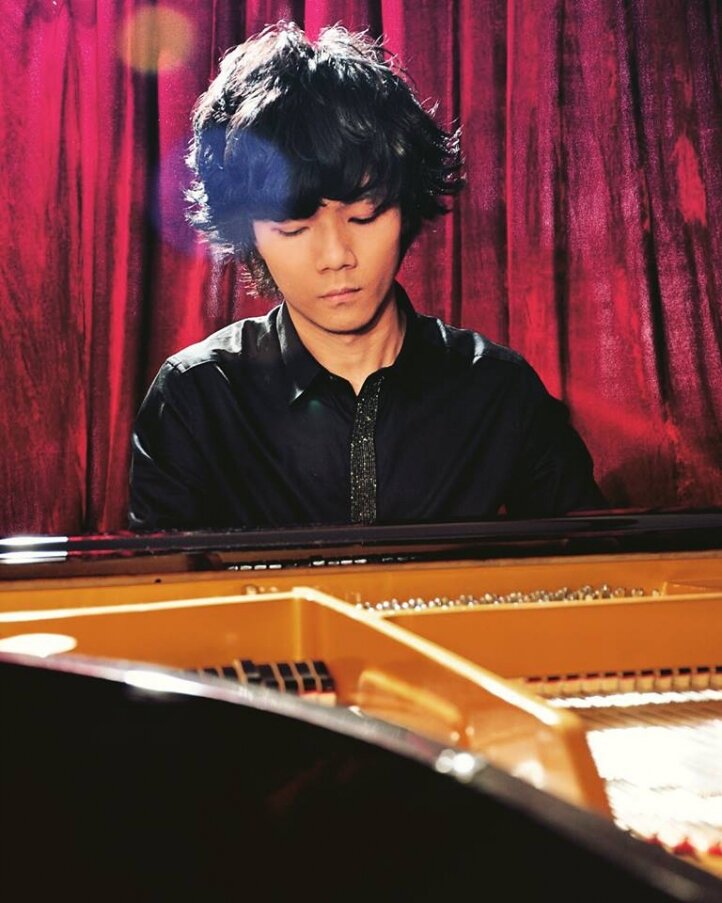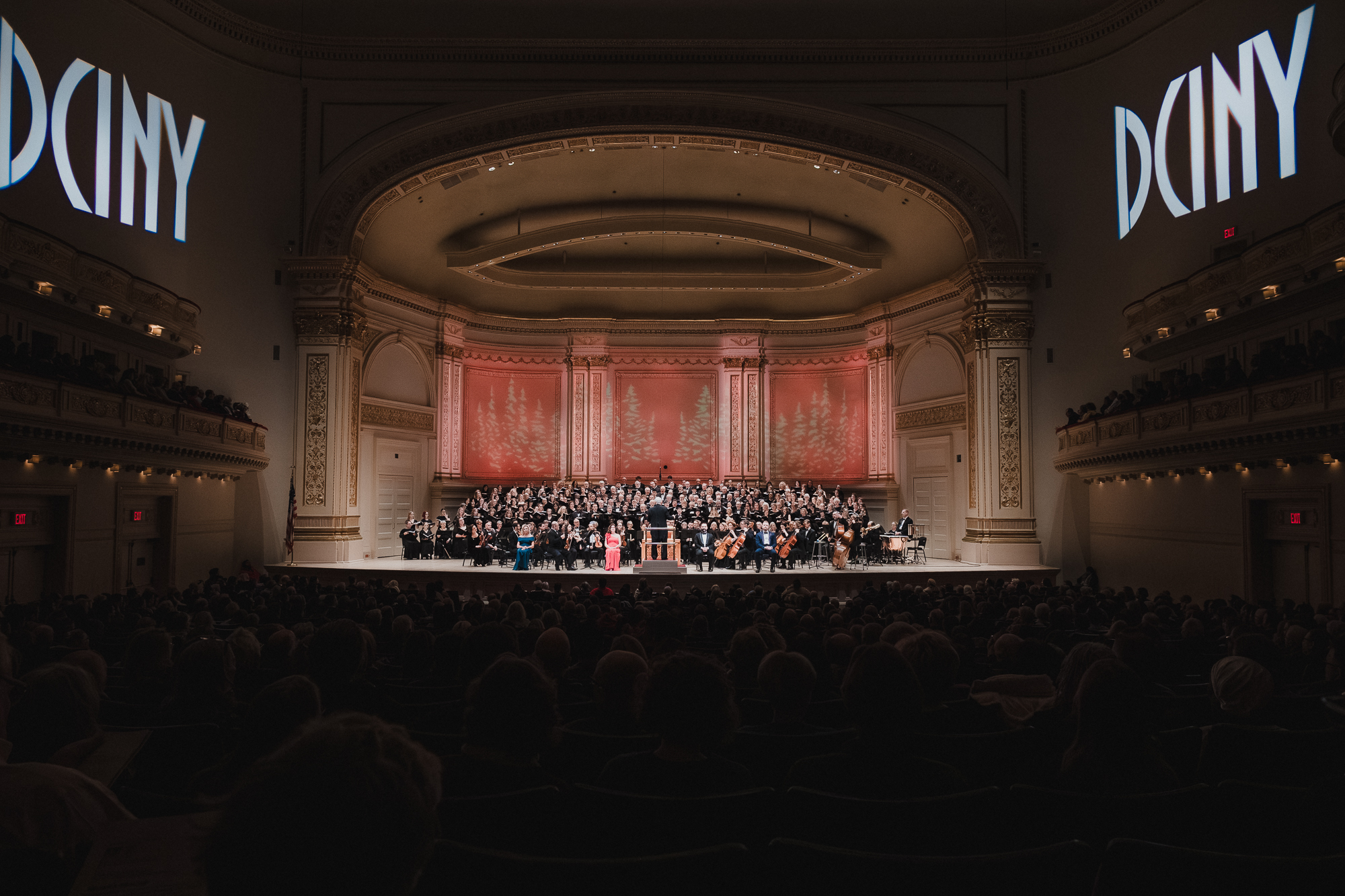The preeminent clarinetist Charles Neidich took time out of his busy day recently to chat with New York Concert Review about the imminent return of his extremely popular WA Concert Series and, what’s more, the creation of a new and innovative orchestra in New York, the WA Sinfonietta, with concerts in March and May under the auspices of the newly established Artena Foundation. Big things are afoot!
Classical music lovers need little introduction to Charles Neidich, as he has made his mark in New York and internationally for decades, performing with the world leading orchestras and ensembles, but we’ll summarize (and the reader may also visit his website, charlesneidich.net). Brought into prominence in 1985 as the first clarinetist to win the prestigious Walter W. Naumburg Competition, he is known not only as one of the world’s foremost virtuoso clarinetists but also as a musical visionary who also composes, conducts, edits, curates, and teaches (Juilliard, Manhattan School of Music, Mannes, and CUNY Graduate School). He can be heard on the Chandos, Sony Classical, Sony Vivarte, Deutsche Grammophon, Musicmasters, Pantheon, and Bridge labels, and most recently in the Mozart Basset Clarinet Concerto on historical instruments for Bremen Radio Hall Recordings.
New Yorker music lovers will undoubtedly be excited by the return of the WA Concerts (reviewed several times in New York Concert Review by this reviewer and others), but the news of a new orchestra, the WA Sinfonietta, brings the anticipation to a new level. We are delighted to share with our readers his discussion of all this and more.
Rorianne Schrade: I understand you’re bringing back WA Concerts! I’ve heard several – including one last year – and they were fantastic, so I can’t wait!
Charles Neidich: Thank you very much. The WA concert with that we were going to start with is
March 9th at 3:00 PM, and that will be Wind Miniatures. Our program is not completely set, but there is a work with for clarinet and alto saxophone by Gabriela Ortiz, and then there are Three Sonnets for Woodwind Pairs by Elinor Armer – and we’re filling it out with other pieces as well.
RS: Is this also at the Tenri Institute?
CN: Yes this will be at Tenri.
RS: I’m so glad you are returning … and do you have any other WA dates we can share with our readers?
CN: Well, basically, the bigger project that is happening is from our foundation which we have just started, which is called the Artena Foundation, and that is the WA Sinfonietta, which is an orchestra. So, I will conduct that, and this is the beginning of a larger project which will involve educational outreach and also opportunities for young people to play concertos with the orchestra as well … but we’ll start this season with two concerts.
RS: This is fantastic! Please tell me more about those if you would – and also about the name Artena.
CN: Right. Artena is basically an acronym from art, technology, and nature.
RS: Ah, I see … and I recall that the name WA itself also had a special meaning. For readers unfamiliar with the WA series, started by Mr. Neidich with his wife and brilliant clarinetist Ayako Oshima, WA is a Japanese word for a circle or ring symbolizing harmony, completeness, the continuity of past, present, future, and the unity of all of humankind. So Artena embraces this as well. And so you’re starting the WA Sinfonietta with two concerts?
CN: Yes and the first concert will be the evening of March 23rd, and that will be in the Good Shepherd Faith Church which is on 66th Street.
RS: Right near Juilliard …
CN: Exactly right, and this particular concert will take its meaning in a certain way from the concert which was October 25th, 1885, where Brahms premiered his Fourth Symphony with the Meiningen orchestra called the Meiningen Court Orchestra. The Meiningen Court Orchestra was considered to be the best orchestra in Europe, and it was Brahms’s favorite orchestra. Meiningen at that time was a tiny little town, but it had a Duke who loved music and was very close to all things which were modern at that time. He was also very close to Wagner, and many of the musicians from the Meiningen orchestra actually played in the Bayreuth orchestra also. That was the sort of gig that they did, the kind of extra work for that particular orchestra. Now, the Court Orchestra was very interesting, because it was a small orchestra of basically 48 players, so if they had needed something more, they would add let’s say extra brass or extra percussion, but basically it was that. You had basically nine first violins, nine second violins, you had let’s say five violas, four cellos, four basses in there, and double winds and brass. Brahms wrote his Fourth Symphony for this orchestra, and so in this concert that we’re doing, the makeup of the Sinfonietta will be like the Meiningen Court Orchestra. What is interesting about that is that, with the smaller number of strings, you have much more equal balance between winds and strings.
RS: I see .. very interesting.
CN: Yes, so that I look at the at the Fourth Symphony as a work which is in a certain sense almost in between orchestral music and chamber music, and it was this smaller configuration that Brahms actually preferred for this symphony, because when he premiered it at the Meiningen he was offered extra strings, but he declined the offer!
RS: That’s important to know…
CN: You see he wanted more equal balance between winds and strings, and what we hear first of all with that kind of orchestral setup even in the beginning of it is that what the winds play is actually an outline of the melody in canon. We never hear that. You see, so it’s quite beautiful in this way. I think it’s quite illuminating to play this piece that way. Also, what you can do is have much more flexibility in terms of tempo. And, if we read for instance the notes of Steinbach, a composer Brahms was very close to, he has notes about all the symphonies and we can see how he as he mentions about tempo and this kind of flexibility of tempo.
Now, one other thing with the Fourth Symphony which is going to be quite notable, I think, is that Brahms actually wrote a four-measure introduction and he was convinced not to include it in the publication, and I think it’s never actually been performed. There is an interview with George Szell where he talks about that a little bit, but I don’t think he presents it very convincingly. (The listener can hear Szell’s explanation here: George Szell and Brahms). I actually think that the introduction gives a very different sense to the piece, you see, so it’s it becomes a little more like, for instance, in the second movement of Beethoven’s Seventh Symphony – you have this A-minor chord and the winds that get softer, and then the piece starts after that – and I have the feeling that that may have been the inspiration that Brahms had. So, you have this, which comes out very strongly and then sort of goes back, and in the way Brahms wrote it, it actually starts in A minor then goes to E minor, then finally it keeps diminuendo-ing until the strings come in. I think that enables that opening melody which he writes as piano in the orchestra to really be piano.
RS: What a difference… and I’m curious to know, because I know you’ve done a lot of conducting, have you done this particular Symphony this way before?
CN: I’ve never done it this way. I’ve actually conducted the Fourth Symphony but I never did that, but I think that especially going back, because we’re remembering the world premiere of the piece in 1885, maybe we can have a second World Premiere.
RS: A second premiere of Brahms sounds amazing! Are there other pieces on the rest of the program that you can share with us?
CN: Well, the program will be based on that concert from 1885, … and that concert started with the Mendelssohn Opus 32, the Overture to The Beautiful Melusine, so we will start with that. In the concert in 1885, that was followed by the Brahms Violin Concerto – instead, I’ll play Mozart’s Clarinet Concerto, and then we will end with the Brahms 4th Symphony.
RS: I can’t wait for that concert, March 23 – not to be missed. Now, can you also tell us a bit about the second concert, the one in May?
CN: Yes, so the second concert will be on May 13th.
RS: And is this second one also at Good Shepherd?
CN: No that’s going to be at the DiMenna Center. And this one will involve a smaller orchestra but it’s going to feature first the Mieczyslaw Weinberg Clarinet Concerto, which is his Opus 104, which he wrote in 1970, and that will be an American premiere.
RS: Very exciting!
CN: Then, also the Weinberg’s Fourth Chamber Symphony, which is the last piece that he wrote, and that’s also I think its American premiere, though I’m not exactly sure, but I think it is. We will start that program with Shostakovich. There’s an arrangement of the Shostakovich Third String Quartet which Rudolf Barshai made. He was a great violist and the conductor and founder of the Moscow Chamber Orchestra, which I played in when I was a student in Moscow.
RS: Yes, I know that in the seventies you were there in Moscow on a Fulbright for three years.
CN: Yes … and Barshai arranged the Third String Quartet for a Chamber Orchestra, and it has the name Shostakovich Symphony for Strings and Winds opus 73a. The Opus 73 is the quartet, and so they list this arrangement as 73a. This was supposedly given approval by Shostakovich, and it’s very well done. I’m very happy in a very nostalgic way to do that piece, because I played in the Moscow Chamber Orchestra, and I was fairly close to Rudolf Barshai, first as a student in Moscow. That was very interesting, because I was just an American student there, and I got a notice in the dormitory mailbox to please show up at this rehearsal. I had no idea, and I showed up and there it was, the Moscow Chamber Orchestra. I don’t know why and how, but he had I guess heard of me being there and maybe wanted a good clarinet player.
RS: From what I’ve heard, you were much more than “just an American clarinetist” there … but more on that later…
CN: So anyway, this is also in a way kind of in memory of Barshai, as well as Shostakovich, that I’m doing that – and Weinberg. Weinberg was alive when I was a student there, although he was not living in Moscow, but I had no idea of his existence. He had been very much in Moscow and Leningrad (now Saint Petersburg of course), but he was completely … oh … canceled, I guess you could say. He was composing still, but he was not being performed at all and not even mentioned, his name. It’s very interesting … I think he was in Minsk, and maybe his music was played in Minsk, but not where I was at all, so I didn’t know of his existence.
RS: You’ve done so much to unearth music from composers who were canceled by the Soviets in that era. Can you tell us some more about that?
CN: It’s very interesting that Shostakovich had three major composers whom he in a way championed himself, and were sort of acolytes. Weinberg was the closest, and they were almost the same age I think, and they were really very much best friends. Weinberg, of course, had had a very tragic life and Shostakovich was not able to help him. Then the other one of course was Galina Ustvolskaya, who was considered to be his best student and his favorite student, and she totally broke with Shostakovich finally, even though they were very close, because she felt that he did not stand up for his principles with enough force. I think that she basically took herself out of circulation in a way, but her music is actually remarkable. The other composer’s name was Alexander Lokshin, and at least I was able to meet Lokshin. The reason why, although he was very much also kind of canceled when I was there, was that he had a few supporters, and Barshai was one of them. Barshai took me to meet him at his little apartment, and we had a whole afternoon together, very fascinating … a brilliant fellow, he was. Also we recorded I think it was his Tenth Symphony with Barshai, and so I played a solo clarinet part – there was a contralto clarinet, violin, and orchestra – so he had me play in that recording. So, I have a little more personal recollection and experience with Lokshin, but those three were the most important I should say followers of Shostakovich, and it was so interesting that they were really shunted it off completely to the sidelines when I was a student there, which actually was one year after Shostakovich’s death, and I don’t know why, but it was interesting.
RS I believe my first big exposure to Lokshin came through your WA concerts… but this concert in May reflects more your exploration of Weinberg and Shostakovich.
CN: The Weinberg Clarinet Concerto was I guess you could say in a certain way rediscovered quite recently. Even when I was in Moscow I didn’t know of its existence, and he had written in 1970, so I was in Moscow after he had written it. I asked friends of mine in Moscow when I found out about its existence – and I even went there a few times early in the 21st century and asked about it – and nobody knew about that piece. So it’s really more recently that Weinberg’s music has actually once again come to the fore, and his music is quite remarkable, I think.
RS: We need to know more.
CN: That’s right, and the Fourth Chamber Symphony, which is the last work, is very, very special in a way. So, the second concert will have the Shostakovich arranged by Barshai and the Weinberg Clarinet Concerto, and then we’ll end with Weinberg’s Fourth Chamber Symphony. That piece is so … it’s not tragic, but there is something about it which is sort of not completely of this world. It’s a very remarkable work. Of course you know always the music from what was the Soviet Union time and the Eastern Bloc, the way the composers composed was very much like writing memoirs, which they wrote in music, like in a diary in music … and this has that sense of his life. There are all sorts of different things happening and then finally coming to terms with the end of life, in a way.
RS: This should be a monumental concert. Where else would we be able to hear such a concert led by someone who has delved so deeply into this music? I don’t want to change gears, and I would love to hear much more about this, but I meant to ask you about your own composing as well and everything else that’s going on. Also, are you going to record some of these?
CN: I’m hoping, and beginning in a certain way, to create a legacy, and I have been composing. It’s a slow process, because I’m doing too much teaching and everything else, but you know that’s not unimportant to do. So, I do have some pieces that are sort of in process now, and pieces which I have written already – and I’m also doing more editing. I will start again to record, and in the not too distant future I’ll be recording the Brahms sonatas with the piano that Brahms played, and the clarinet which is his great friend Richard Mühlfeld played, and that will be with Robert Levin. We’ve had a history with those pieces and also playing them on so-called period instruments as well.
RS: So exciting … I would love to hear more about that. I also hope you record the Weinberg and all of these lesser-known works in May for posterity.
CN: That’s right, so we hope to have recordings. It’s always an issue, you know, you record from a concert, and then it’s an archival recording, so can we release it or can we not release it – there’s all that kind of problematic stuff, but we will record them.
RS: A lot to look forward to … well, I’m tempted to ask you a million more questions, but if you’ll indulge me, one odd question I have is based on a story I’d heard back in the eighties, about how the Soviet musicians were mesmerized by your breathing techniques, something they were at the time not so familiar with…
CN: Well, that was what’s called circular breathing, and that was actually a very ancient technique, and it’s in Eastern classical music, whether it’s Indian music or Chinese or Japanese, the wind players always were able to do this. This circular breathing was even mentioned by the flutist who Bach knew and whom Bach wrote for named Pierre-Gabrielle Buffardin, who mentioned that he learned to circular from the glass blowers in Constantinople at that time, and of course the glass blowing you must do circular breathing because you have to keep blowing through the glass as you’re creating it – otherwise you have to start again, you see. So that technique is very ancient, and I actually believe that it was much more common 200 years ago, or even like 150 years ago, than it was recently, and there have been jazz players who did it, but in the clarinet world, at least in the modern clarinet world, I was pretty much, I think, the first person to do that.
RS: Meaning the first in the Soviet Union? or here?
CN: Maybe in general in classical clarinet. It’s possible there was someone else, but I’m not so sure about that. Nowadays this technique is much more common, but I actually see that I’m actually the root of that.
RS: I’m so glad to have followed up on that after so many years. Also, I was wanting to ask, after I reread about your degree in anthropology from Yale, how that may have informed your musical life – and also what advice you would give to younger musicians now, compared to, let’s say, in the 70s and 80s.
CN: I can just mention just very briefly about anthropology. So I was of a generation where I went to school to get an education to learn things, you see, and I didn’t have any sense that I’m going to school to get a profession… and I think this was maybe a wonderful time. I was not alone at that time, when I was doing that, so it was a much more idealistic, maybe naive, time that we had then. And so I did study anthropology, and then I studied philosophy. I majored in anthropology, and I think what I would say is just that it gave me a broader worldview, if not an understanding and interest in many different kinds of musics throughout the world.
RS: Well, that shows.
CN: Also, especially in philosophy, it’s how to think about things … and I think about what I would tell young musicians now. You know this is a difficult time. It’s much more difficult than when I was a student, I have to say. And you don’t know why there are all sorts of monetary problems, natural problems, climate change, and all sorts of social fabric around the world sort of cracking about, and I think that young musicians have to see themselves as advocates for the value of humanity, in a way, and have to sort of have that always in mind.
RS: “Advocates for the value of humanity” – that is a powerful phrase to remember.
CN: That doesn’t help them get a job of course.
RS: No, that’s a different story (sigh)… we won’t go there.
CN: Nowadays, also in a way, musicians have to have a kind of entrepreneurial spark, so they can’t just be content with getting this position here or this position there. We have to reinspire a love of classical music, and it’s a big very big responsibility,
RS: Perhaps because you were not ever limited to a small practice room aiming to have a profession, you became more a citizen of the world. At any rate, you are a great ambassador for those wanting to learn about classical music. I always find your concerts thought-provoking. There are always patterns and themes, and that’s part of what is so enriching about them.
CN: Well, thank you. I always try for that, and I try to show that we can use classical music to connect to many different kinds of people.
RS: I also recall the amazing spreads after WA concerts… and for a while you all went virtual, and we were all so distraught missing the live concerts.
CN: You know the pandemic really did terrible damage to so much…
RS: Live music particularly …
CN: That’s right, because music is a communal art form. The idea of having food and music and different things, it’s just more difficult or scary to do now. You know, if we can emotionally come out of this in in a positive way – because I think we’ve come out of the pandemic in a very negative way in a lot of respects – then maybe we can start again with these kinds of more communal things.
RS: That’s a beautiful thought. I love that. I don’t want to rack this up, but that would be a good note to end on. I will close with just wishing you the very best in all these exciting ventures. I know they will bring yet another gift from you to the world.
For more information on the WA Concert Series, the WA Sinfonietta, and the Artena Foundation, please visit: artenafoundation.org
by Rorianne Schrade for New York Concert Review; New York, NY





